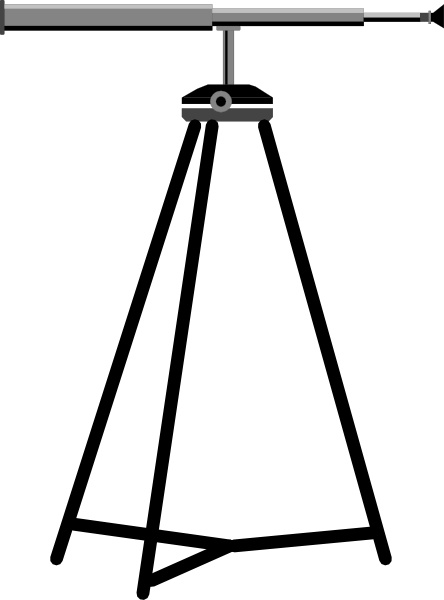
#Large telescope drawing cut out Patch#
Filling in those gaps is the purpose of algorithms like Bouman’s.īouman will present her new algorithm - which she calls CHIRP, for Continuous High-resolution Image Reconstruction using Patch priors - at the Computer Vision and Pattern Recognition conference in June. Currently, six observatories have signed up to join the project, with more likely to follow.īut even twice that many telescopes would leave large gaps in the data as they approximate a 10,000-kilometer-wide antenna. The solution adopted by the Event Horizon Telescope project is to coordinate measurements performed by radio telescopes at widely divergent locations. To image something this small means that we would need a telescope with a 10,000-kilometer diameter, which is not practical, because the diameter of the Earth is not even 13,000 kilometers.” “ equivalent to taking an image of a grapefruit on the moon, but with a radio telescope. “A black hole is very, very far away and very compact,” Bouman says. The largest single radio-telescope dish in the world has a diameter of 1,000 feet, but an image it produced of the moon, for example, would be blurrier than the image seen through an ordinary backyard optical telescope. We would never be able to see into the center of our galaxy in visible wavelengths because there’s too much stuff in between.”īut because of their long wavelengths, radio waves also require large antenna dishes. “Just like how radio frequencies will go through walls, they pierce through galactic dust.

“Radio wavelengths come with a lot of advantages,” says Katie Bouman, an MIT graduate student in electrical engineering and computer science, who led the development of the new algorithm. The project seeks, essentially, to turn the entire planet into a large radio telescope dish. The algorithm would stitch together data collected from radio telescopes scattered around the globe, under the auspices of an international collaboration called the Event Horizon Telescope. Researchers from MIT’s Computer Science and Artificial Intelligence Laboratory, the Harvard-Smithsonian Center for Astrophysics, and the MIT Haystack Observatory have developed a new algorithm that could help astronomers produce the first image of a black hole.


 0 kommentar(er)
0 kommentar(er)
